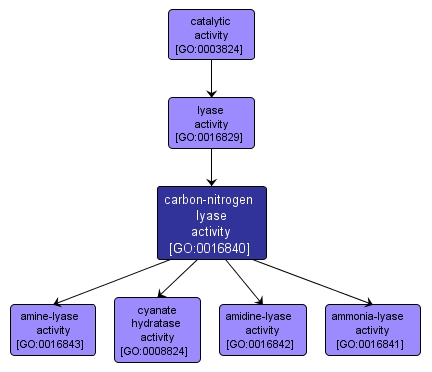| Desc: |
Catalysis of the release of ammonia or one of its derivatives, with the formation of a double bond or ring. Enzymes with this activity may catalyze the actual elimination of the ammonia, amine or amide, e.g. CH-CH(-NH-R) = C=CH- + NH2-R. Others, however, catalyze elimination of another component, e.g. water, which is followed by spontaneous reactions that lead to breakage of the C-N bond, e.g. L-serine ammonia-lyase (EC:4.3.1.17), so that the overall reaction is C(-OH)-CH(-NH2) = CH2-CO- + NH3, i.e. an elimination with rearrangement. The sub-subclasses of EC:4.3 are the ammonia-lyases (EC:4.3.1), lyases acting on amides, amidines, etc. (EC:4.3.2), the amine-lyases (EC:4.3.3), and other carbon-nitrogen lyases (EC:4.3.99). |














